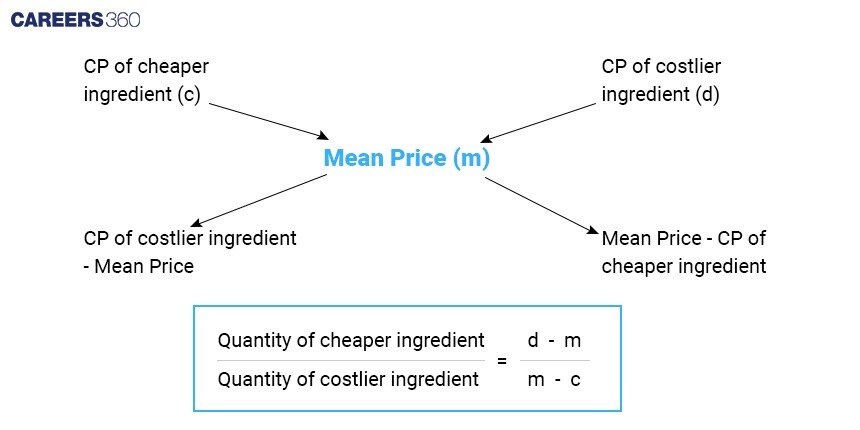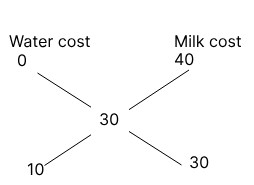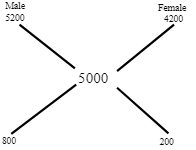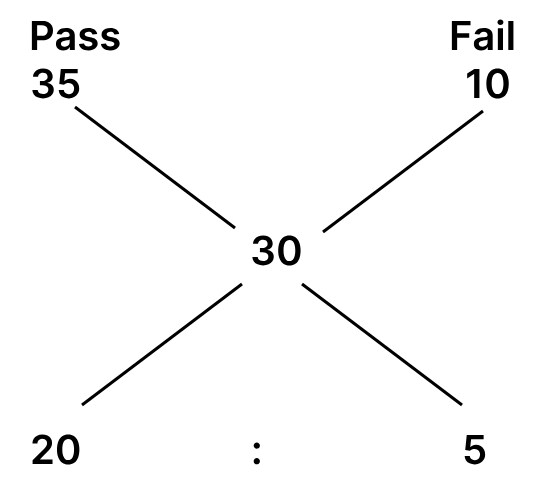Mixture and Alligation: Questions, Formula, Examples, Mock Test
‘Mixture and Alligation’ is an important concept in mathematics, especially useful in solving problems related to the mixing of two or more components with different characteristics, such as cost, concentration, or quantity. This topic is widely applied in various fields, including chemistry, commerce, and everyday problem-solving. The mixture and alligation formula is crucial for solving these problems efficiently. Mixture and alligation questions for competitive exams, such as those for bank and SSC CGL, often test this concept. Practicing mixture and alligation questions with solutions can help prepare for these exams.
- Concept of Mixture and Alligation
- Mixture and Alligation: Formula
- Mixture and Alligation: Concept of Replacement
- Tips and Tricks
- Practice Questions/Solved Examples
Concept of Mixture and Alligation
Mixture: When we combine two or more substances to form a single homogeneous entity, it is called a mixture.
Alligation: A rule that helps in finding the mean value of a mixture when the quantities and prices of the ingredients are known.
Mixture and Alligation involves combining two or more quantities with different prices, concentrations, or values to achieve a desired mixture. There are two main types of problems:
Types of Problems
Simple Mixture Problems: Involving the combination of two or more substances. For example, mixing two different types of tea to get the desired price per kilogram.
Replacement Problems: Involving the removal and addition of a substance from a mixture. For example, replacing a part of a salt solution with water to change its concentration.
Mixture and Alligation: Formula
There are various formulas used to solve problems related to mixture and alligation. Let us discuss them one by one with proper examples.
Rule of Alligation:
The rule of alligation is used to find the ratio in which two or more ingredients at different prices (or concentrations) must be mixed to produce a mixture at a given price (or concentration).
Formula:

Example: One litre of milk costs INR 40. Water is mixed with milk and the mixture cost becomes INR 30 per litre. Find the ratio of water and milk in the mixture.
Solution: Given: That one litre of milk costs INR 40.
Water is mixed with milk and the mixture cost becomes INR 30 per litre.

The ratio of water and milk in the mixture =
Hence, the correct answer is
Weighted Average to solve the problems of Mixture and Alligation:
The weighted average method helps in finding the average price (or concentration) of a mixture.
Formula: Weighted Average =
Where
Example: The average height of 30 boys in a class is 160 cm. If the average height of the other 20 boys is 165 cm, the average height of the whole class (in cm) is:
Solution: Average height of 30 boys = 160 cm
The average height of the other 20 boys = 165 cm
We have to find out the average height of the whole class which is
=
=
=
Hence, the correct answer is 162 cm.
Rule of constant:
In this rule, we target the element in the mixture whose amount does not change but its percentage changes because of the change in the total amount of the mixture.
Example: How many litres of pure water should be added to 50 litres of 30% milk solution so that the resultant mixture is a 20% milk solution?
Solution: The quantity of milk in the solution is
So, 15 liters = 30% of the first solution =20% of the new solution
Therefore, the quantity of new solution =
Now, the increase in the quantity of the new mixture is because of adding extra water.
Hence, the quantity of water added = 75 – 50 = 25 litres.
Mixture and Alligation: Concept of Replacement
Replacement problems involve removing a part of the mixture and replacing it with another substance, which often results in a change in the overall concentration.
The formula for replacement in the mixture
Final concentration = Initial concentration ×
where
Example: From a cask of milk containing 64 litres, 8 litres are drawn out and the cask is filled up with water. If the same process is repeated a second, then a third time, what will be the proportion of milk to water in the resulting mixture?
Solution: The amount replaced by water each time is 8 litres.
The amount of milk = Initial amount
So, the amount of milk
Amount of water
So, the required ratio
Hence, the correct answer is
Tips and Tricks
Always identify the different substances and their concentrations or prices accurately.
Choose between the rule of alligation, weighted average, and rule of constant based on the problem type.
Simplify the ratios in alligation problems to make calculations easier.
Ensure all quantities are in the same units before applying formulas.
Practice Questions/Solved Examples
Q.1.
In what ratio should sugar at Rs. 30 per kg be mixed with sugar at Rs. 45 per kg so that, on selling the mixture at Rs. 42 per kg, there is a profit of 20%?
Hint: Use the concept of alligation:
Required ratio = (Higher value – Mean value) : (Mean value – Lower value)
Solution:
Let the cost price (CP) of sugar A be Rs. 30 and sugar B be Rs. 45.
Let the CP of the mixture be Rs.
Now,
Using the concept of alligation we have,

Required ratio = (Higher value – Mean value) : (Mean value – Lower value)
=
Hence, the correct answer is option (1).
Q.2.
In what ratio should tea at Rs. 240 per kg be mixed with tea at Rs. 280 per kg so that, on selling the mixture at Rs. 324 per kg, there is a profit of 20%?
Hint: Required ratio = (Higher value – Mean value) : (Mean value – Lower value)
Solution:
Let the cost price (CP) of Tea A = Rs. 240 and CP of Tea B = Rs. 280
Let the CP of the mixture be Rs.
The mixture is sold at Rs. 324 with a gain of 20%.
So,
Thus, the CP of the mixture is Rs. 270.
Now, using the concept of alligation, we get,

Required ratio
= (Higher value – Mean value) : (Mean value – Lower value)
=
Hence, the correct answer is option (3).
Q.3.
A vessel contains 20 L of acid. 4 L of acid is taken out of the vessel and replaced by the same quantity of water. Next, 4 L of the mixture is withdrawn and again the vessel is filled with the same quantity of water. The ratio of the quantity of acid left in the vessel with the quantity of acid initially in the vessel is:
Hint: Use this formula =
Initial quantity ×
Solution:
Here,
Remaining acid = Initial quantity ×
⇒ Remaining acid
So, the required ratio
=
=
=
Hence, the correct answer is option (3).
Q.4.
A drum contains 80 litres of ethanol. 20 litres of this liquid is removed and replaced with water. 20 litres of this mixture is again removed and replaced with water. How much water (in litres) is present in this drum now?
45
40
35
44
Hint: Use this formula:
Quantity of ethanol after replacement =
Solution:
Total volume of mixture = 80 litres
Liquid replaced with water is 20 litres and this process is repeated two times.
Pure ethanol left in the mixture after that
So, water present in the final solution = 80 – 45 = 35 litres
Hence, the correct answer is option (3).
Q.5.
The average salary of male employees in a firm was Rs. 5200 and that of females was Rs. 4200. The mean salary of all the employees was Rs. 5000. What is the percentage of female employees?
80%
20%
40%
30%
Hint: Calculate ratios of male and female by the rule of alligation and find the desired value.
Required ratio = (Higher value – Mean value) : (Mean value – Lower value)
Solution:

Given: The average salary of male employees in a firm = Rs. 5200
The average salary of female employees in a firm = Rs. 4200
The average salary of all employees in a firm = Rs. 5000
By using the rule of alligation,
The ratio of the male employees to the female employees = (Higher value – Mean value) : (Mean value – Lower value)
= 800 : 200 = 4 : 1
So, the required percentage of female employees
Hence, the correct answer is option (2).
Q.6.
A bottle is filled with liquid, of which 4 parts are water and 5 parts are fruit extract. How much of the mixture must be drawn off and replaced with water so that the mixture may be half water and half fruit extract?
Hint: When
Final volume = Initial volume ×
Solution:
Let
Given: Initial ratio = Water : fruit extract = 4 : 5
Final ratio = water : fruit extract = 1 : 1
Taking the volume of fruit extract, we get:
Final volume = initial volume ×
⇒
⇒
⇒
⇒
Hence, the correct answer is option (1).
Q.7.
A vessel is filled with liquid, 3 parts of which are water and 5 parts syrup. How much of the mixture must be drawn off and replaced with water so that the mixture may be half water and half syrup?
Hint: Solve by assuming that
Quantity of water in
Quantity of syrup in
Solution:
Given: Suppose the vessel initially contains 8 litres of liquid.
In this liquid, water is 3 litres and syrup is 5 litres.
So the ratio is
Let
Quantity of water in
Quantity of syrup in
As per given condition,
The quantity of water in the new mixture is
The quantity of syrup in the new mixture is
After replacement, the quantity should be the same.
⇒
⇒
So, part of the mixture replaced
Hence, the correct answer is option (3).
Q.8.
Rice worth Rs.126 per kg and Rs.135 per kg are mixed with a third variety in the ratio of
182.5
195.5
133.5
175.5
Hint: Find the average price of the first and second varieties. Then, use the rule of alligation.
Solution:
The first and second varieties are mixed in equal proportions.
Their average price =
So, the mixture is formed by mixing two varieties, one at Rs. 130.50 per kg and the other at Rs.

By the rule of allegation, we have,
Ratio = (Higher value – Mean value) : (Mean value – Lower value)
⇒
⇒
⇒
Hence, the correct answer is option (4).
Q.9.
The average of marks obtained by 100 candidates in a certain examination is 30. If the average marks of the passed candidates are 35 and those of the failed candidates are 10. What is the number of candidates who passed the examination?
60
70
80
90
Hint: You have to make the ratio of pass and fail students to get the answer. Use the alligation rule.
Solution:

The average marks of the passed candidates are 35 and those of the failed candidates are 10.
Using the alligation method, we get,
The ratio of the number of pass students to fail students =
So, Total students = 4 + 1 = 5 units
According to the question, 5 units = 100
⇒ 1 unit = 20
Passed candidate = 4 units = 4 × 20 = 80
Hence, the correct answer is option (3).
Q.10.
A vessel is filled with liquid, 5 parts of which are water and 11 parts syrup. What part of the mixture must be drawn off and replaced with water so that the mixture may be syrup and water in the ratio
Hint: Let
Solution:
5 parts water and 11 parts syrup (considering the unit volume of the mixture)
Water =
Let
Water =
According to the question,
Or,
Or,
Or,
Or,
Hence, the correct answer is option (4).
Frequently Asked Questions (FAQs)
When we combine two or more substances to form a single homogeneous entity, it is called a mixture.
Alligation is a rule that helps to find the mean value of a mixture when the quantities and prices of the ingredients are known.
The rule of alligation is used to find the ratio in which two or more ingredients at different prices (or concentrations) must be mixed to produce a mixture at a given price (or concentration).
Formula:
The two main types of mixtures are homogeneous mixtures and heterogeneous mixtures. Homogeneous mixtures have a uniform composition throughout, with the individual components not visibly distinguishable, such as salt dissolved in water.
Heterogeneous mixtures, on the other hand, have a non-uniform composition, where the individual components remain distinct and can be visually identified, such as a mixture of sand and iron filings.
No, alligation and allegations are not the same thing.
Alligation is a mathematical technique used to solve problems related to the mixing of different components.
Allegations, on the other hand, refer to claims or accusations, typically without proof, often used in legal or formal contexts.
The two types of alligation are alligation medial and alligation alternate.
Alligation medial is used to find the mean value of a mixture when the quantities and values of individual components are known.
Alligation alternate is used to determine the ratio in which two or more components with known values should be mixed to achieve a desired mean value.

